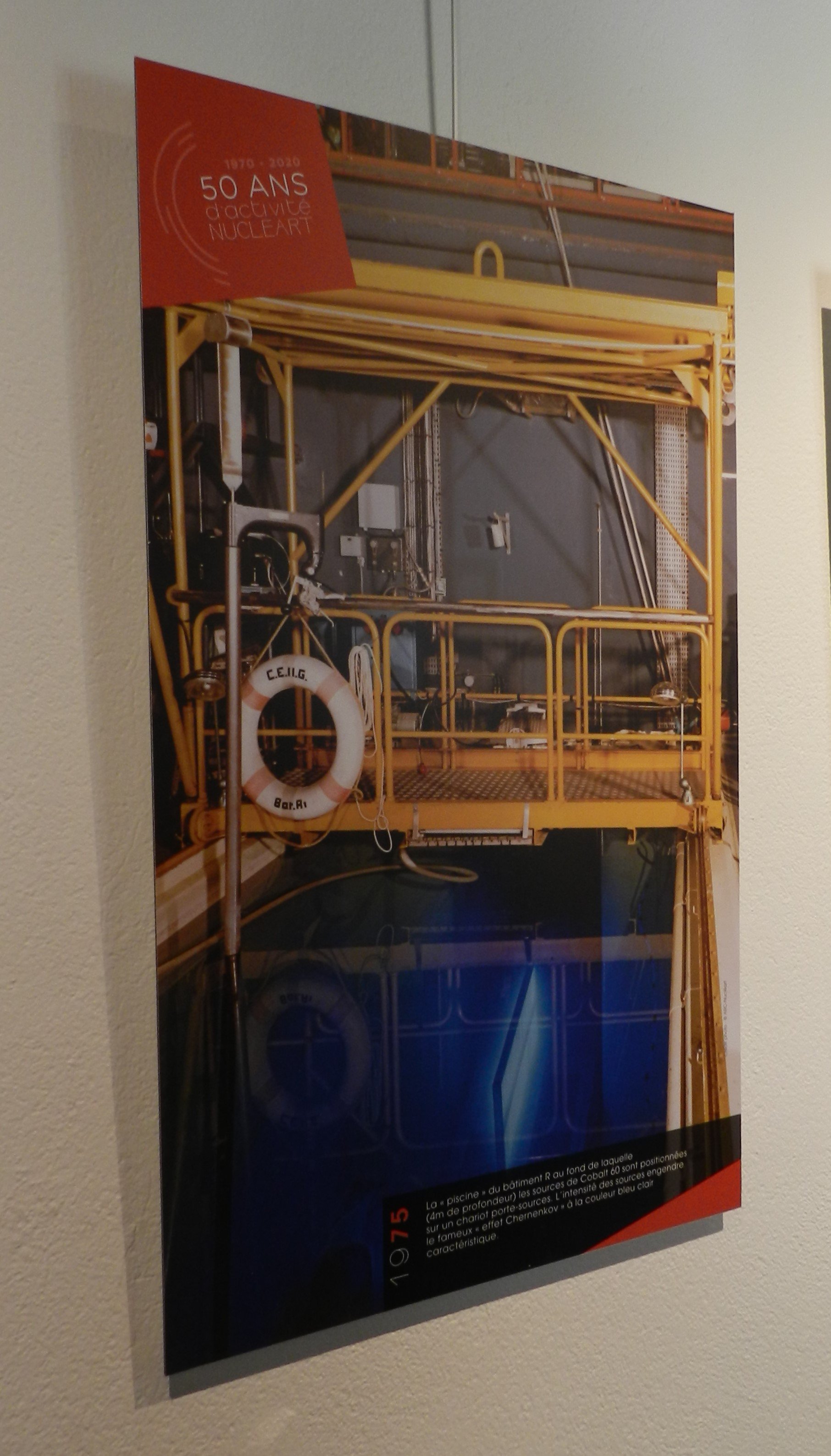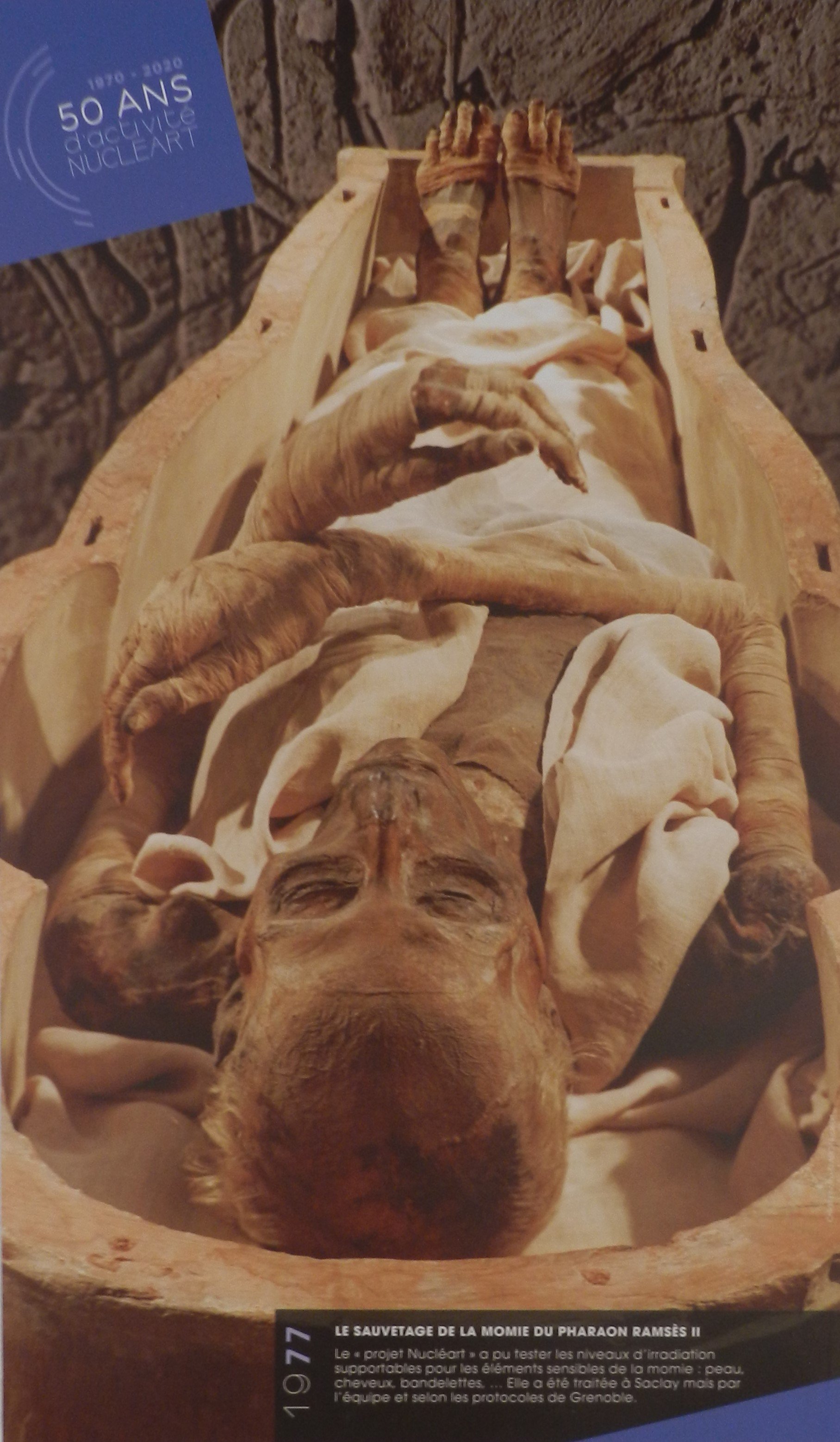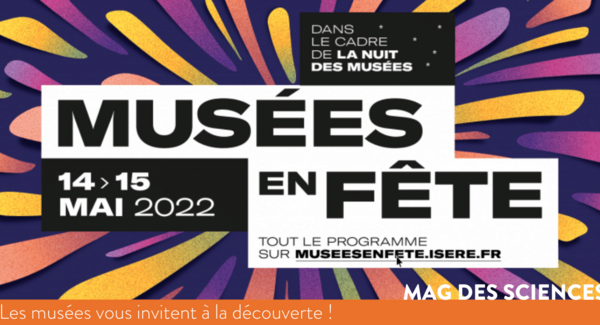Relive the events of the “Celebrating museums” weekend.
It was during the weekend of May 14 and 15 that I went on a mop in Grenoble on the occasion of the “Les Musées en Fête” event. For this occasion, all the museums of Isérois offered many activities and even visits at night. So I suggest you follow me on my adventures.
I first went to the inauguration of the “Minute Papillon!” space. at the Jardin des Plantes Joséphine Baker, then at the Dauphinois museum for the thematic visit “A pharaoh facing science”.
To listen to the program “The Grenoble museums invite you to discover!” broadcast on May 2022, 18 on RCF Isère, it’s right here ⬇
A program produced by Guillaume Froment, student of the CCST master’s degree at UGA and presented by Nicolas Boutry.
The inauguration of the “Minute Papillon!” at the Jardin des Plantes Josephine Baker.
Minute-Papillon space in the Jardin des Plantes Joséphine Baker
It was first of all, Gilles Namur, deputy mayor of Grenoble in charge of public spaces, who explained to me the concept of the Minute-Papillon space: a fun and educational space to introduce visitors to the Botanical Garden , life of butterflies. You will find in this space the favorite plants of the butterflies: the host plants. Host plants are plants known for millennia by butterflies as sources of food, but also a place to lay these eggs. You can find sage, parsley, dill… A delight for butterflies and humans alike. And it is all around these plants that you can find many educational panels to learn more about the butterflies of our regions.
Christine Simoens, in charge of biodiversity at the city of Grenoble in the Nature department, also explains to me that these famous host plants grow naturally almost everywhere in Grenoble, whether at the Bastille, or more curiously, at the Saint-Roch cemetery in the Green Island district. There is therefore a large concentration of butterflies in these places unlike the more frequented areas. Indeed, the beautiful flowers present in town may delight our eyes, but they are not suitable for our butterflies.
The city of Grenoble has all this information thanks to the “Propage” protocol which aims to observe the presence of butterflies. Christophe Huan, technician of the Nature in the city service, has been able to contribute to this protocol in the past. He even explained to me the interest of listing these butterflies like Lang’s Azure for example. This butterfly lived until recently in the south of France and came further north to Grenoble to lay these eggs. However, as temperatures increase due to global warming, Lang’s Azure no longer needs to migrate and can now stay all year round in our regions.
If you want to learn more about butterflies, I therefore recommend future activities for families, schools, MJC which will take place throughout the month of June, July, August, September and until October. This will require booking and taking a key to the Museum as well as a small backpack, a small kit. You can then come to work either alone or with a facilitator. Otherwise, the Joséphine Baker Botanical Garden is accessible every day from 9 a.m. to 12 p.m. and from 1:30 p.m. to 5:30 p.m.
The thematic visit “A pharaoh facing science” at the Dauphinois museum.
It was on Sunday May 15 at the Dauphinois museum that Laurent Cortella, nuclear physics engineer and facilities manager at ARC-Nucléart, welcomed us. We then headed to a first-floor hallway where posters illustrating the history of ARC-Nucléart were on display. An ideal setting for Laurent Cortella to tell us about the key events of this internationally renowned research and conservation workshop.
It was in 1970 that the Commissariat for Atomic Energy and Alternative Energies (CEA) initiated the “Nucléart” program with a view to applying, in the field of cultural heritage conservation, some of the specific properties of gamma radiation. But before developing on the conservation methods used at ARC-Nucléart, let’s briefly explain what gamma rays correspond to.

Electromagnetic spectrum of light
Gamma rays are very similar to the rays of visible light which allows us to admire our heritage for example. Indeed, visible light is characterized by its wavelength, between 400 and 750 nanometers. Above these 750 nanometers, the human eye is no longer able to translate this light into an image. It is these wavelengths that are used to detect objects at night producing heat (infra-reds), to heat our dishes (microwaves) or to listen to RCF Isère at the 103.7 frequency (the radio waves). Below 400 nanometers, this light also becomes invisible to the human eye. Ultraviolet causing sunburn is one of them. Indeed, the lower the energy of this light, the more energetic it will be. Gamma rays (γ rays) are the light with the highest energy (one million times more than visible light). The CEA has therefore found several applications for this high-energy light.

Pool containing gamma ray sources
The first conservation method developed by ARC-Nucléart consists of using gamma rays to accelerate the polymerization process. This is how heritage objects are impregnated with resin and then irradiated with gamma rays in order to harden the resin and consolidate the object. This technique, unique in the world, bears the name of the research workshop: it is the Nucléart method.
Gamma ray source manipulation is not done just anyhow. These sources are moved from a pool (preventing the propagation of gamma rays) to a chamber with walls 1m50 thick. Indeed, gamma rays are highly dangerous for living organisms because of their high energy.
ARC-Nucléart has decided to use this energy by developing a method for destroying harmful living organisms by irradiation at an appropriate dose. Indeed, heritage objects are often threatened by living organisms responsible for biodegradation, pests. There are 2 kinds, they are insects and fungi. It is this same technique that was used on the famous mummy of Ramses II, one of the most Egyptian pharaohs. The mummification process used by the Egyptians consists in avoiding any risk of biodegradation of the body of the deceased by removing the viscera, by removing the water from the body thanks to salt essential to the development of fungi. Once a maximum of water has been removed, the mummy is placed in a dry place, its tomb. However, when the mummy was discovered, it found itself in conditions conducive to the development of fungi.

Mummy of Ramses II
It was therefore on the initiative of Christiane Desroche-Noblecourt, then chief curator of the Egyptian antiquities department at the Louvre Museum, that the intervention project on the mummy of Ramses II was born. After a diagnostic phase, it appeared essential to treat the mummy to eradicate insects and fungal species, responsible for the ongoing degradation. After numerous mummy sample irradiation tests carried out in Grenoble to ensure the harmlessness of this technique on the remains of the mummy, the mummy was irradiated at the CEA center in Saclay on May 10, 1977.
You can find posters summarizing the 50th anniversary of ARC-Nucléart in a corridor on the first floor of the Musée Dauphinois.
The museums keep their doors open despite the end of the event so do not hesitate to go there.
Useful links :
An article written by Guillaume Froment, intern in scientific communication at RCF Isère.
–

